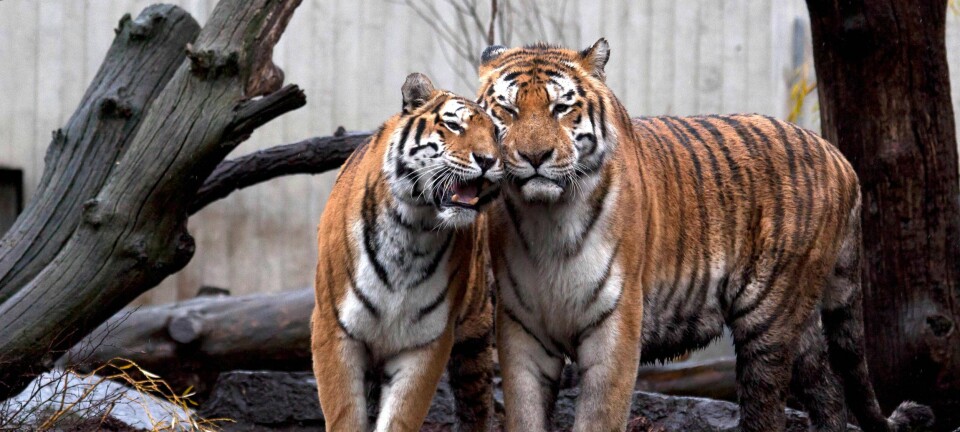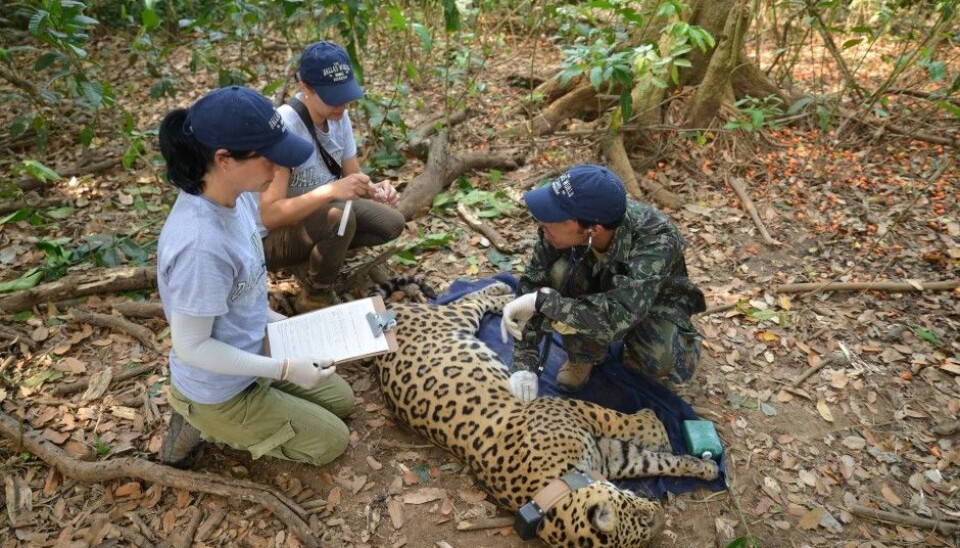
How to capture a jaguar
Before a tracking collar can be placed on a jaguar it has to be caught. Here is how it’s done.
You aren’t likely to have given it much consideration, but how do you capture a fierce wild jaguar so it can be equipped with a radio transmitter? Øystein Wiig, a professor and conservator at the Natural History Museum at the University of Oslo, has had to learn the job.
He heads up a research project involving the tracking of eight jaguars fitted with radio transmitters.
Bauxite mines
The project entails a study of the situation for large wild mammals in Paragominas rain forest in northern Brazil. The Norwegian corporation Norsk Hydro has bought a large bauxite mining operation here. Bauxite ore is the world’s primary source for production of aluminium.
“Bauxite extraction here involves excavation of soil to a depth of about ten metres where the layer of ore is found,” says Wiig.

The idea is to bulldoze this soil back into place after the bauxite is taken out and subsequently replant the tropical forest.
But this process takes years and years. In the meanwhile the large mammals in this habitat are being disturbed and impacted. This is what Wiig is investigating.
He has mounted about 50 wildlife cameras in the area owed by Norsk Hydro. This forest area covers about 200 square kilometres. That is nearly 60 times the size of New York’s Central Park, or over three Manhattans. The bauxite has already been mined out from some of the area but about half is still rain forest.
“The next stage is to catch several jaguars and fit them out with transmitters. This will enable us to track the wandering of individuals hour by hour and see how they go in and out of the mining area.”
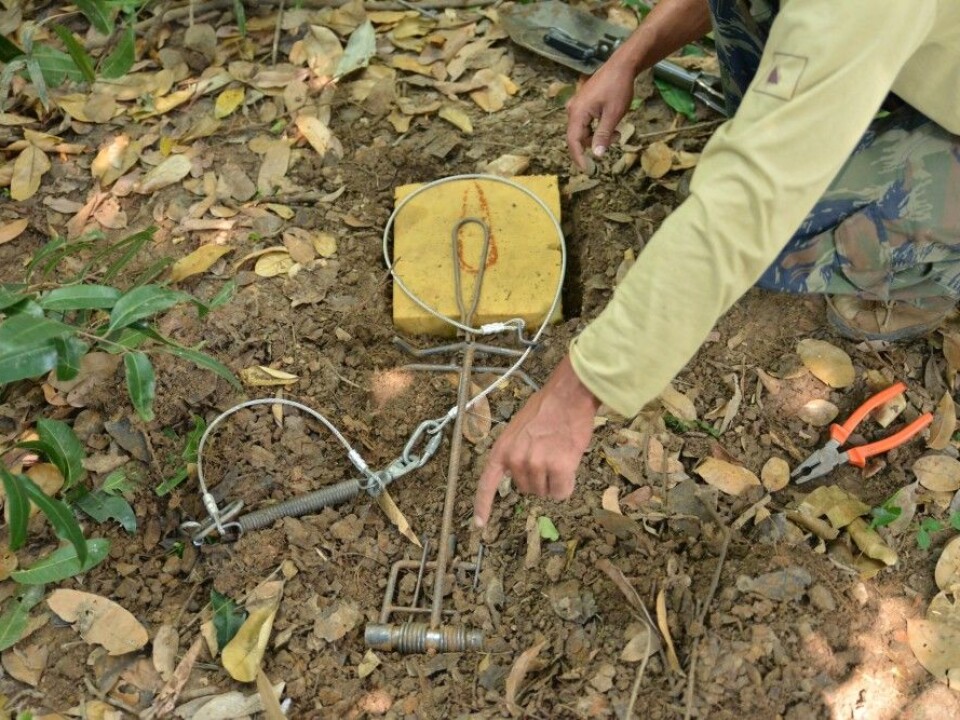
But back to the original question: How do you catch one of these jaguars?
Snares
The wildlife cameras have been in place since the spring of 2014. A photo is taken every time an animal passes by. Some cameras take pictures of more jaguars than others.
“So we know where the chances are best for catching a jaguar,” says Wiig.
He has worked together with the Brazilian jaguar researchers lead by Ronaldo Morato from the National Predator Center in Brazil to learn their methods of capture. The Brazilian wildlife experts are old hands at this.
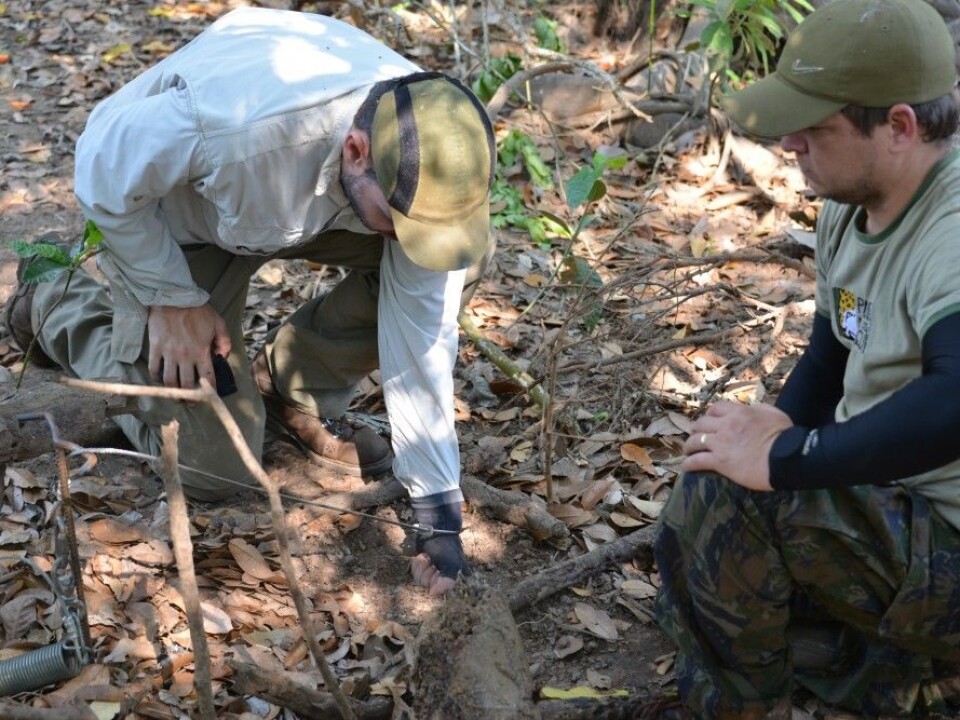
Paths and dirt roads criss-cross this rain forest and jaguars use them as easier ways of getting about.
“We lay out a kind of ladder made of tree stocks one after another. The path is blocked with branches so that the jaguar has to step between these stocks,” says Wiig.
Sometimes bate is used to lure the animal over to the snare. A spring-loaded platform between two of the tree stocks is triggered when a jaguar steps on it. A flexible loop then tightens around one of the jaguar’s legs.
The animal is a captive of the spot until the researchers arrive.
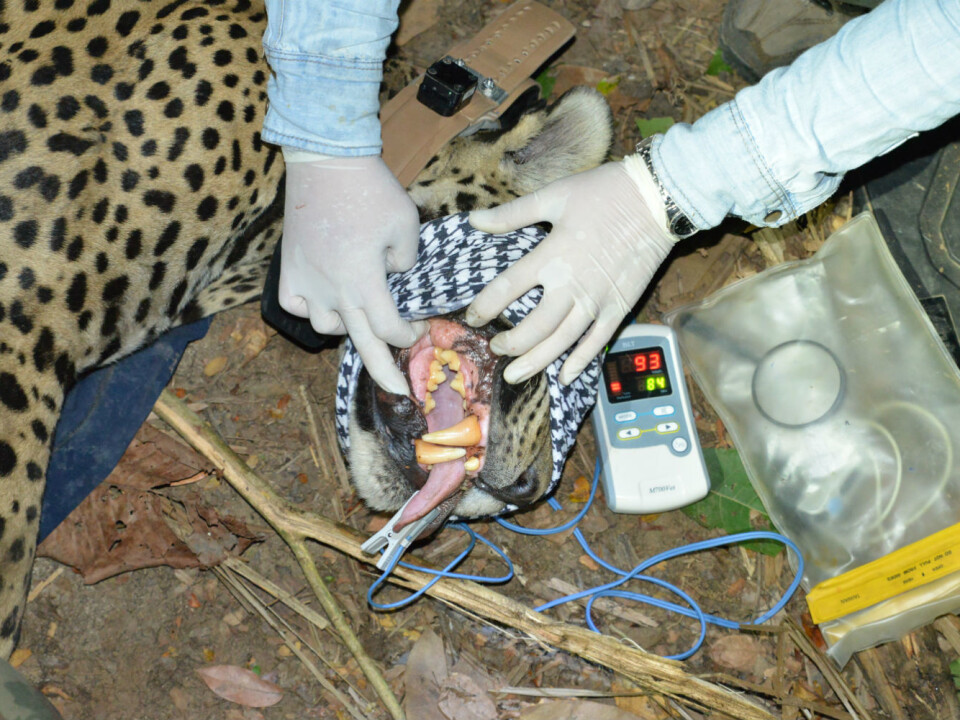
“The snare is linked to a radio transmitter so we are alerted when an animal has been trapped. We work from a cabin about 10 km away. This is usually in the middle of the night and we drive out to check the catch.”
“Then we shoot the jaguar with a tranquilizer dart.”
Of course there are lots of other animals in the forest so the catch is not always a jaguar.
Pumas and ocelots are other big felines here. Tapirs or giant anteaters can also get snared in the trap.
“Some of these animals have to be tranquilized before we can free them.”
Any jaguars that are caught are equipped with transmitters and then released.
-------------------------------------
Read the Norwegian version of this article at forskning.no
Translated by: Glenn Ostling







